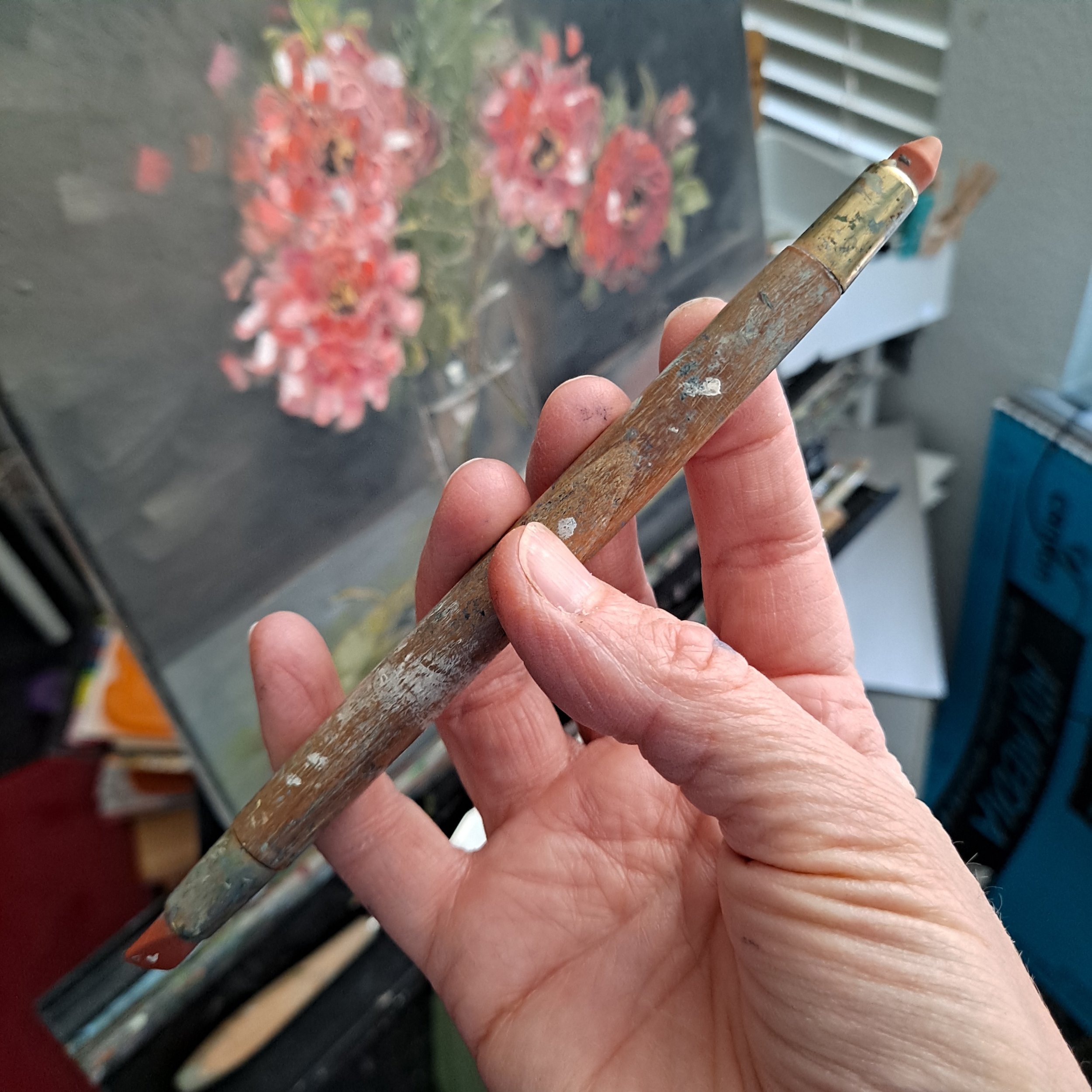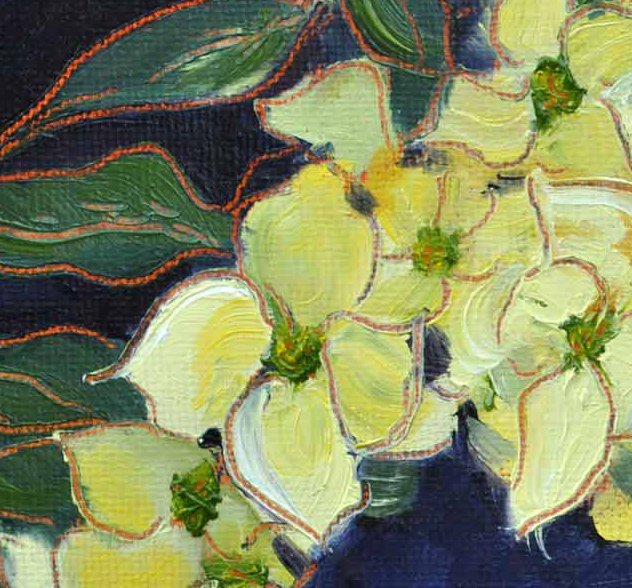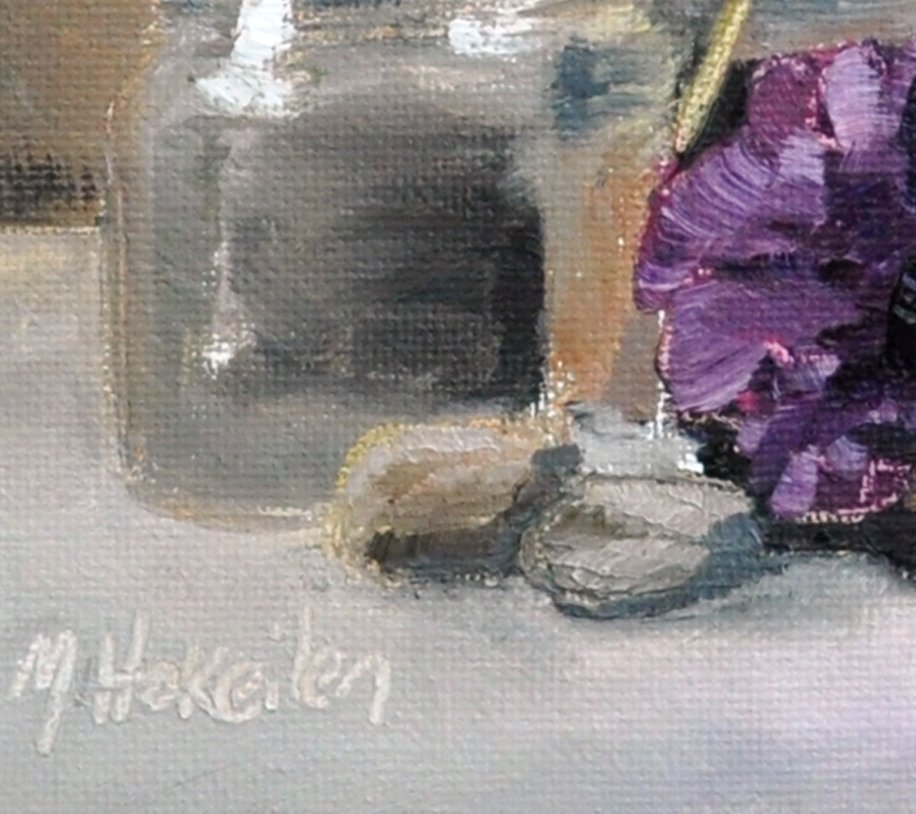I am sometimes asked why I prefer working with oil paint, and the answer is always multifaceted. Top of my list, though, is that it is slow-drying and therefore moveable and blendable and markable. If I need to move a line or a shape, I can literally push the paint with my brush or palette knife, or scrape it off altogether. If I want to change the color, whether in value or hue, I can paint over a layer of wet paint with white or black or another color and it will mix in with the layer already on the canvas. Likewise, if I want a soft edge or a gradual change in color, I can go over the paint on the canvas with a clean brush or knife to blend it until it has the effect I want.
One of the most fun outcomes of the slow-drying characteristic of oil paint is the ability to sketch in the wet paint. I have a rubber-tipped tool (sometimes called a wipe-off tool) that I use for this.
Inevitably there will be a point in the painting process where I need to adjust a shape or location of something in my painting, or mark where highlights need to be applied, or remove a precise bit of paint, or reveal the color on the canvas beneath the wet paint recently applied. So I pull out this handy little double-sided stick and carve out the image I want, like sketching in the wet paint.
This editing typically happens about halfway through a painting, and usually I continue to paint over my sketch marks to the point where they are no longer visible. But sometimes I like to leave a few marks in the final painting, revealing bare canvas (white) or toned backgrounds (blue, red, or orange).
Sometimes I stop after sketching in the wet paint, leaving the sequence of applying paint and then taking it away starkly visible.
And, almost always, I sign my paintings with this tool.























